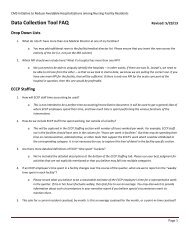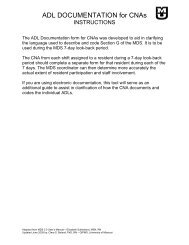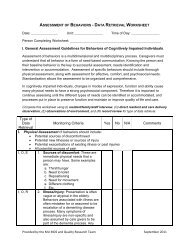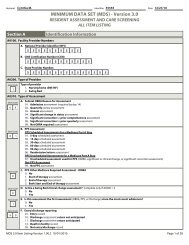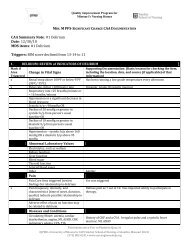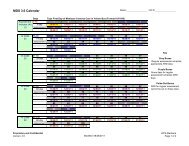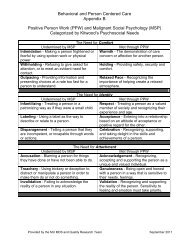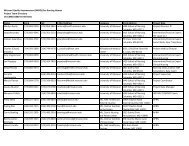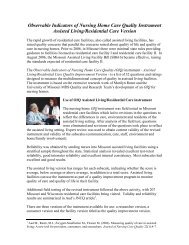National Guideline Clearinghouse (NGC). Guideline synthesis
National Guideline Clearinghouse (NGC). Guideline synthesis
National Guideline Clearinghouse (NGC). Guideline synthesis
Create successful ePaper yourself
Turn your PDF publications into a flip-book with our unique Google optimized e-Paper software.
lowest elevation consistent with medical conditions and restrictions.<br />
A 30 degree elevation or lower is recommended.<br />
Use lifting devices to avoid dragging clients during transfer and<br />
position changes.<br />
Do not use donut type devices or products that localize pressure to<br />
other areas.<br />
(Level of Evidence = IV)<br />
For individuals restricted to chair:<br />
Use an interdisciplinary approach to plan care.<br />
Have the client shift weight every 15 minutes, if able.<br />
Reposition at least every hour if unable to shift weight.<br />
Use pressure-reducing devices for seating surfaces.<br />
Do not use donut type devices or products that localize pressure to<br />
other areas.<br />
Consider postural alignment, distribution of weight, balance,<br />
stability, support of feet, and pressure reduction when positioning<br />
individuals in chairs or wheelchairs.<br />
Refer to OT/PT for seating assessment and adaptations for special<br />
needs.<br />
(Level of Evidence = IV)<br />
Nutrition<br />
HIGN<br />
(2008)<br />
Manage nutrition:<br />
Consult a dietician and correct nutritional deficiencies<br />
Increase protein and calorie intake and A, C, or E vitamin<br />
supplements as needed (Houwing et al., 2003 [Level II]; Centers<br />
for Medicare and Medicaid Services [CMS], 2004 [Level V]).<br />
Offer a glass of water with turning schedules to keep patient<br />
hydrated.<br />
RNAO<br />
(2005)<br />
A nutritional assessment with appropriate interventions should be<br />
implemented on entry to any new health care environment and when<br />
the client's condition changes. If a nutritional deficit is suspected:<br />
Consult with a registered dietitian. (Level of Evidence = IV)<br />
Investigate factors that compromise an apparently well nourished<br />
individual's dietary intake (especially protein or calories) and offer<br />
him or her support with eating. (Level of Evidence = IV)<br />
Plan and implement a nutritional support and/or supplementation<br />
program for nutritionally compromised individuals. (Level of<br />
Evidence = IV)<br />
If dietary intake remains inadequate, consider alternative<br />
nutritional interventions. (Level of Evidence = IV)<br />
9 of 17



